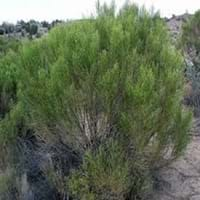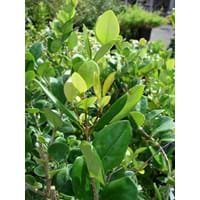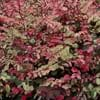Life Span
Perennial
Annual
Type
Shrub
Broadleaf Evergreen
Origin
Hybrid origin, Southwestern United States
Eastern Asia
Types
Not Available
Not Available
Habitat
riparian zones, Semi desert, Upland
foothill woods, Hills, Lowland
USDA Hardiness Zone
8-10
7-10
AHS Heat Zone
12-1
Not Available
Sunset Zone
7, 8, 9, 10, 11, 12, 13, 14
21,22
Habit
Spreading
Upright/Erect
Flower Color Modifier
Not Available
Bicolor
Fruit Color
creamy white
Green, Black
Leaf Color in Spring
Green
Dark Green
Leaf Color in Summer
Green
Dark Green
Leaf Color in Fall
Green
Dark Green
Leaf Color in Winter
Green
Dark Green
Leaf Shape
Oblanceolate , Ovate
Acicular
Plant Season
Spring, Summer, Fall, Winter
Spring, Summer, Fall, Winter
Sunlight
Full Sun
Full Sun, Partial Sun, Partial shade
Type of Soil
Clay, Loam, Sand
Loam, Sand
The pH of Soil
Acidic, Neutral, Alkaline
Acidic, Neutral, Alkaline
Soil Drainage
Well drained
Average
Bloom Time
Spring
Late Spring, Early Summer, Summer
Tolerances
Drought, Dry soil, Heat Tolerance
Drought, Salt
Where to Plant?
Ground, Pot
Ground
How to Plant?
Seedlings
Rooted stem cutting, Stem Cutting, stem tip cuttings
Plant Maintenance
Medium
Medium
Watering Requirements
Needs very little water
Average Water Needs, Do not water frequently
In Summer
Lots of watering
Lots of watering
In Spring
Moderate
Moderate
In Winter
Average Water
Average Water
Soil pH
Acidic, Neutral, Alkaline
Acidic, Neutral, Alkaline
Soil Type
Clay, Loam, Sand
Loam, Sand
Soil Drainage Capacity
Well drained
Average
Sun Exposure
Full Sun
Full Sun, Partial Sun, Partial shade
Pruning
Cut back old stems to the ground, Remove damaged leaves, Remove dead branches, Remove dead leaves
Remove damaged leaves, Remove dead branches, Remove dead leaves
Fertilizers
can go long without fertilizers
All-Purpose Liquid Fertilizer, Apply N-P-K, fertilize in growing season
Pests and Diseases
Pests and diseases free
Aphids, Bacterial leaf spot, Galls, Honey fungus, Red blotch, Wasps
Plant Tolerance
Dry Conditions, Dry soil, Heat And Humidity
Drought, Full Sun, Shade areas, Variety of soil types
Flower Petal Number
Single
Single
Foliage Texture
Fine
Medium
Foliage Sheen
Glossy
Glossy
Attracts
Butterflies
Aphids
Allergy
Unknown
Not Available
Aesthetic Uses
along a porch, deck or patio, Beautification, Ground Cover, Showy Purposes, Wild gardens
Borders, Not Used For Aesthetic Purpose
Beauty Benefits
Not Available
Not Available
Edible Uses
Sometimes
Yes
Environmental Uses
Air purification
Air purification
Medicinal Uses
anti-inflammatory, Anti-oxidant, cholesterol-lowering
Antibacterial, Hypotensive, Tonic
Part of Plant Used
Twigs
Leaves
Other Uses
Can be made into a herbal tea
Used as an ingredient in coffee
Used As Indoor Plant
No
No
Used As Outdoor Plant
Yes
Yes
Garden Design
Groundcover
Container, Foundation, Hedges, Mixed Border, Screening, Wind Break, Topiary, Bonsai, Espalier
Botanical Name
BACCHARIS 'Centennial'
LIGUSTRUM japonicum
Common Name
desert broom , broom baccharis , greasewood
Japanese Ligustrum
Waxleaf Ligustrum
Texas Privet
Waxleaf Privet
In Hindi
desert broom
Japanese Privet
In German
Wüste Besen
japanische Privet
In French
desert broom
Privet japonaise
In Spanish
escoba del desierto
Privet japonesa
In Greek
desert broom
Ιαπωνικά Privet
In Portuguese
vassoura do deserto
Privet Xapanese
In Polish
desert broom
Xapanese Privet
In Latin
desert broom
Japanese Privet
Phylum
Magnoliophyta
Tracheophyta
Class
Magnoliopsida
Magnoliopsida
Family
Asteraceae
Oleaceae
Genus
Baccharis
Ligustrum
Clade
Angiosperms, Asterids, Eudicots
Angiosperms, Asterids, Eudicots
Tribe
Astereae
Not Available
Subfamily
Not Available
Not Available
Number of Species
Not Available
Season and Care of Desert Broom and Japanese Privet
Season and care of Desert Broom and Japanese Privet is important to know. While considering everything about Desert Broom and Japanese Privet Care, growing season is an essential factor. Desert Broom season is Spring, Summer, Fall and Winter and Japanese Privet season is Spring, Summer, Fall and Winter. The type of soil for Desert Broom is Clay, Loam, Sand and for Japanese Privet is Loam, Sand while the PH of soil for Desert Broom is Acidic, Neutral, Alkaline and for Japanese Privet is Acidic, Neutral, Alkaline.
Desert Broom and Japanese Privet Physical Information
Desert Broom and Japanese Privet physical information is very important for comparison. Desert Broom height is 60.00 cm and width 150.00 cm whereas Japanese Privet height is 150.00 cm and width 120.00 cm. The color specification of Desert Broom and Japanese Privet are as follows:
Desert Broom flower color: White
Desert Broom leaf color: Green
Japanese Privet flower color: White
- Japanese Privet leaf color: Dark Green
Care of Desert Broom and Japanese Privet
Care of Desert Broom and Japanese Privet include pruning, fertilizers, watering etc. Desert Broom pruning is done Cut back old stems to the ground, Remove damaged leaves, Remove dead branches and Remove dead leaves and Japanese Privet pruning is done Remove damaged leaves, Remove dead branches and Remove dead leaves. In summer Desert Broom needs Lots of watering and in winter, it needs Average Water. Whereas, in summer Japanese Privet needs Lots of watering and in winter, it needs Average Water.





